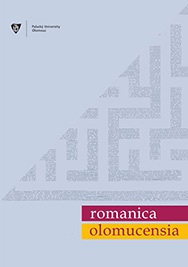Las estructuras comparativas intensivas aplicadas al adjetivo negro en español medieval en comparación con el francés
Intensive Comparative Structures Applied to the Adjective negro in Mediaeval Spanish in Comparison to French
Author(s): Xavier Blanco, Rafael García PérezSubject(s): Middle Ages, Historical Linguistics, Comparative Linguistics, Phraseology
Published by: Univerzita Palackého v Olomouci
Keywords: mediaeval Spanish; mediaeval French; collocations; intensity; phraseology;
Summary/Abstract: This paper is focused on intensive comparative structures (which are by far the most numerous in language and discourse) applied to the adjective negro in mediaeval Spanish. Many examples are studied and connected to similar structures in Mediaeval French (Old French and Middle French). The concept of collocation used in this paper is based on the same concept developed within Explanatory and Combinatorial Lexicology. The examples which contain the above-mentioned comparative structures are taken from the CORDE (Corpus diacrónico del español, RAE) and CDH (Corpus del Nuevo diccionario histórico del español) corpora. All the second terms of this type of comparison are specified and discussed, from the most frequent (pez, carbón, cuervo...) to the least frequent (olla, diablo, guijarro, escarabajo...). It is found that even if Spanish and French are very similar regarding the use of collocative items (which is partly due to phraseological borrowings, as a result of the bustle of translating activity at that time), there are also clear divergences between the two languages. Thus, noir comme l’encre, which was very common in Mediaeval French, only appeared in Spanish (negro como la tinta) in the 16th century. The examples provided throughout the paper allow some insights into the way a given linguistic structure, which has a grammatical meaning (intensity) and can be used in both literary and technical texts, is also a vehicle for a shared cultural content, a content that often comes from the Latin origin of both languages.
Journal: Romanica Olomucensia
- Issue Year: 33/2021
- Issue No: 1
- Page Range: 21-39
- Page Count: 19
- Language: Spanish

